- Register
- Log in to Tune-In
- Wishlist (0)
-
Shopping cart
(0)
You have no items in your shopping cart.
Beatles News
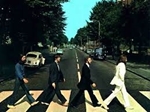
"He say one and one and one is three..." Abbey Road by the Beatles is playing through my Bluetooth headphones, sent from my iPhone, music streaming from Amazon Prime, over satellite WiFi, on the commercial jet that is taking me from Phoenix to Long Beach. So much innovation and world-changing disruption in one event. It’s one moment in our modern world.
It got me thinking about the pace and crazy enormity of the changes in our world. The amount of change, and the new industries created by them are so familiar now that I think we take it for granted. Such pretentious deep thoughts are the sort of thing that I enjoy contemplating while trying to ignore the guy in the seat next to me, who is hogging far more than his fair share of the armrest.
The Beatles are a great example of the revolution that is our new norm. Usually, we think about technology chips, machines, and software that turn the world upside down. But the Beatles did the same thing to popular music.
Source: Eric Miller
details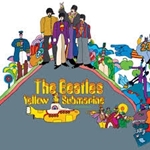
George Harrison’s life had transformed through his immersion into Indian music and spirituality. However, he experienced issues with maintaining a balance between a simple life versus a “rock star” hedonistic lifestyle. This struggle is chronicled in “It’s All Too Much,” a track from the Beatles’ Yellow Submarine that represents one of Harrison’s most psychedelic compositions.
He wrote the song “in a childlike manner,” Harrison says in I, Me, Mine, and his lyrics drew inspiration from “LSD experiences” that were “later confirmed in meditation.” He cites certain lines that support his assertion: “As I look into your eyes / Your love is there for me / And the more I go inside / The more there is to see.”
In a June 19, 1999 Billboard interview, Harrison explained that he wrote “It’s All Too Much” on the organ, and played it on the recording. During that discussion, he added that he wrote the songs for reasons other than those he gave in I, Me, Mine: “I just wanted to write a rock ’n’ roll song about the whole psychedelic thing of the time.”
Source: Kit O'Toole/somethingel details

If we've learned anything over the past several years, it's that getting people to agree on anything is hard. Whether it's science, politics, religion, Laurel or Yanny or the geometry of the Earth, we are divided now more than ever.
As far as art and music go, we all agree that it's a matter of taste. But how do a person's musical tastes correlate to their political views? A new study called Tuning In To Politics by TickPick sought answers, and the results are fascinating — perhaps even encouraging!
A survey of over 1,000 Americans who identified themselves as either Democrats, Republicans or Independents found that one thing they agree on, no matter their politics, is classic rock! And two British classic rock bands stood atop the heap in terms of being universally revered: The Beatles and Queen.
Source: Andrew Magnotta/iheart.com
details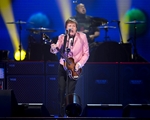
Festival organizers don’t often traffic in superlatives or absolutes. Much as sports coaches prop up the team over contributions of any single player, they’re more likely to stress the value of the whole package.
Amy Corbin, head of C3 Presesnts’ concert division, has that down when discussing the lineup she booked for this year’s Austin City Limits Music Festival. “Two Rock and Roll Hall of Famers,” she says of Paul McCartney and Metallica, but she’s quick to add: “And it’s a nice balance with Childish Gambino and Arctic Monkeys and Travis Scott and Odesza — there’s literally something for everybody.”
When pressed about McCartney, though, she admits that getting the legendary Beatle was an above-and-beyond coup. Would she call Sir Paul THE biggest act ever booked to play ACL Fest?
Source: Peter Blackstock/music.blog.austin360.com
details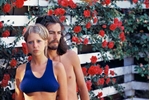
George Harrison always knew there was something special about muse, fashion model and photographer, Pattie Boyd. She was married to the Quiet Beatle from 1966-77 and then to his best mate and guitar God, Eric Clapton from 1979-89. She was the inspiration for many great love songs, including Harrison’s “Something” and Clapton’s “Layla” and “Wonderful Tonight.” She has lived an exotic and glamorous life with rock stars and this charmed existence is the subject of a speaking tour and exhibition at Sydney’s Blender Gallery this May.
Boyd will chat with Rockwiz’s Brian Nankervis in Sydney and Melbourne this week. Some fortunate Sydneysiders also got a taster of these events when Boyd appeared at the Blender Gallery on Saturday. She spoke about her photographs, including ones she took herself and others from her private collection and was generous in answering lots of different questions.
Source: arts.theaureview.com
details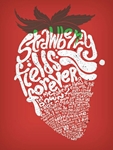
John Lennon’s sister is leading a campaign to offer Beatles fans the chance to own a part of Strawberry Field, and support a benefit campaign in the process.
Immortalized in the 1967 track “Strawberry Fields Forever,” the real Strawberry Field was a Salvation Army children’s home that was demolished in the ‘70s. The campaign aims to raise funds for a new support hub and visitor experience to be built on the site. Bricks from the original building are being sold for approximately $100 each, complete with a presentation box, limited-edition numbered to 2,500, and an embossed hologram.
“We want to open it to the public for the very first time, so that visitors can celebrate and enjoy it now and forever,” the Salvation Army said on the Strawberry Field website. “The visitor experience will tell the story of the Salvation Army, the children’s home that once stood here and the part that Strawberry Field played in the life of John Lennon and the Beatles. We will create a new training and work placement hub for young people with learning disabilities, where they can learn skills, gain work experience, grow in confidence and achieve. You can help us bring Strawberry F details

Because of his work on 2001: A Spacey Odyssey, The Shining, Dr. Strangelove and Paths Of Glory, to name but a few, Stanley Kubrick is rightfully regarded as one of the best directors of all time.
That’s despite the fact that he only actually directed 13 feature films during his illustrious 46 year long career. Kubrick had many more unrealized ideas, scripts and projects, though.
I recently had the chance to speak to Kubrick’s former right-hand man Leon Vitali for the documentary on his career “Filmworker.” Vitali met the director when he was cast in "Barry Lyndon," but then put his acting career to one side so that he could work as Kubrick’s filmworker up until his death.
During this time he was privy to a lot of information and secrets regarding Kubrick, especially when it came to his unproduced films. Vitali was more than happy to open up about these projects to me, so I started things off by quizzing him about the rumors The Beatles’ wanted Kubrick to direct them in an adaptation of "The Lord Of The Rings."
“That was true. That was true,” was Vitali’s emphatic response. “They came to Stanley’s office to talk about it. I don&rsqu details

SOCIAL MEDIA THREAT
O'Sullivan said that Facebook tops the Son of God in terms of size scale and influence as Fianna Fail TD James Lawless says the withdrawal of advertisements for abortion referendum the beginning of a long war
FACEBOOK is now bigger than Jesus and the Beatles, an expert claimed today.
John Lennon once claimed the Fab Four were bigger than the Son of God, but Digital Media expert Barry O’Sullivan, who is Director of Data Analytics at University College Cork, believes Facebook alone could be bigger than both.
O’Sullivan says Facebook’s role in society is as big as Christianity
The Professor made his claim at an Institute of European Affairs seminar where, speaking on the role of social media in society, he said: “In terms of size scale and influence, Facebook is akin to Christianity.”
Panellists considered the possibility of regulation in this area in the context of increased public scrutiny concerning the use, or misuse, of consumers’ personal data and following the recent Cambridge Analytica scandal.
Source: John Drennan/thesun.ie

It wasn’t always easy being vegetarian, even for rock stars. Sir Paul McCartney, who ditched meat and fish from his diet back in the mid Seventies, groans at the memory. “You wouldn’t have believed it.”It’s true: we’ve forgotten how alien a meat-free diet seemed to most people in the last millennium. These days, vegetarians have never had it so good.
Even if we aren’t all committing to removing meat from our diets completely, it seems that – call it flexitarianism, reducetarian, or simply cutting back – a significant chunk of the population will willingly go without some of the time. More than a quarter of evening meals in the UK are now meatless, and the supermarkets and suppliers are falling...
Source: Xanthe Clay - telegraph.co.uk
details

George Harrison's first electric guitar has emerged for sale for £220,000.
The legendary Beatle acquired the Hofner Club 40 model in the summer of 1959 as a 16-year-old after trading it for another guitar.
He kept hold of the instrument for seven years as the band went from playing youth clubs to stadiums.
Harrison once described it as "the most fantastic guitar ever", but was persuaded by manager Brian Epstein to give it away to promote their 1966 Germany tour.
His guitar was offered as the star prize for the winners of 'The Best Beat Band in Germany' organised by German music venue Star Club where the band had played in the early 60s.
The competition was won by local band The Faces and the instrument was presented to Frank Dostal, its singer and guitarist.
Dostal kept hold of it until his death last year but his widow Mary Dostal, a former member of Liverpool band the Liverbirds, has consigned it for sale with US based auction house Julien's Auctions.
Source: telegraph.co.uk
details
Oscar-winning filmmaker Ron Howard said Saturday directing a movie in the Star Wars universe was as daunting as making his Beatles documentary thanks to the intense fan love.
Howard, 64, who made the acclaimed The Beatles: Eight Days a Week ( 2016 ) about the peak years of the Fab Four, told a news conference in southern California he felt just as much pressure on Solo: A Star Wars Story.
"The level of anticipation is unlike anything that I've done. You fall into it and it's amazing. It was a little bit like the Beatles documentary that I took on," said Howard, who won directing and producing Oscars for A Beautiful Mind ( 2002 ).
"I could tell from the moment it was announced, 'Ron, don't (mess) this up.' So I immediately felt the same thing with this. The fans care, and they should care."
Solo, which gets its US release on May 25, charts the adventure-filled past of smuggler Han Solo -- made famous in four Star Wars movies by Harrison Ford -- before he was the galaxy's most adored scoundrel.
The second of three planned spin-offs from Disney-owned Lucasfilm, it follows Rogue One: A Star Wars Story, the second highest grossing movie worldwide in 2016.
Source: The Jakarta Post
details
The song doesn’t specifically mention mothers, but John Lennon wrote “Julia” about his own mother, Julia Lennon, who died in 1958 when Lennon was 17 years old. Although a Beatles song, “Julia” just features Lennon singing and playing the guitar, making the song even more poignant. He sings, “Half of what I say is meaningless / But I say it just to reach you, Julia.”
Source: Lottie Peterson Johnson/deseretnews.com
details
HariSongs is a new record label founded by the George Harrison estate to celebrate the Indian classical music which the former Beatle believed would "help as a balance towards a peaceful daily life."
Harrison died, aged 58, in November 2001 in Los Angeles after battling lung cancer. His remains were cremated and the ashes scattered according to Hindu tradition in a private ceremony at the Ganges and Yamuna rivers in India. He left an estate of almost £100 million (€113m).
HariSongs recently issued its first reissue releases in honour of the legendary Indian musician Ravi Shankar’s birthday - he was born on April 7 1920 - and Ali Akbar Khan’s birthday - born April 14 1922.
Ravi Shankar and Ali Akbar Khan’s In Concert 1972 and Shankar’s Chants of India, are now available for the first time via streaming outlets, as well as to download.
Source: rte.ie
details
From Carlsbad to Santa Barbara, the Southern California coast is peppered with pepper — Pepperland Recording Studios, Pepperdine University, Pepper Lane in Montecito, the Pepper Tree Inn in Santa Barbara just up the road from the Granada Theatre, where choreographer Mark Morris' "Pepperland" had its California premiere Thursday night.
An eveninglong dance program based on parts of "Sgt. Pepper's Lonely Hearts Club Band," "Pepperland," of course, felt very much like it belonged. Indeed, in an extraordinary nod to California, Morris even found a way to pepper George Harrison's Indian raga-inspired "Within You Without You" with an Indonesian gamelan lick in the style of the late Californian maverick composer Lou Harrison.
The dance was originally commissioned by the city of Liverpool, to celebrate the 50th anniversary of the release of the Beatles' historic album, along with a host of other international presenters, including UC Santa Barbara's Arts & Lectures series. For the next couple of years, it will tour the world. Or maybe even across the universe. It's that dazzling. (Upcoming local performances will be at the San Diego Civic Theatre on Saturday, and at the Segerstrom Center for the Arts in details

After the girls in the family moved out, my grandparents’ front sittingroom didn’t get used too often. The old venetian blinds cast strips of sun across the carpeted floor where I could be found surrounded by my aunt’s Beatles records. I was eight or nine. I already knew a lot of their albums, but this was the first time I had played Revolver. The arm lowered itself on to the record and then, after the crackle on the outer grooves, came a strange, slow, garbled voice – “One, two, three, four . . .” – followed by electric-guitar stabs that sounded like nothing I’d heard before.
Revolver was when The Beatles stopped being a pop group and became a studio band. The influences of drugs and the avant-garde were finding their way into songs such as I’m Only Sleeping, Doctor Robert and She Said She Said. John Lennon’s Tomorrow Never Knows must have horrified the “typists down at the Cavern”, as the poet Philip Larkin remarked, but I loved it. The jagged guitars and the obtuse lyrics struck a chord with me. And to balance that out there were two of McCartney’s finest ballads, Here, There and Everywhere and For No One.
Source: irishtimes.com
details